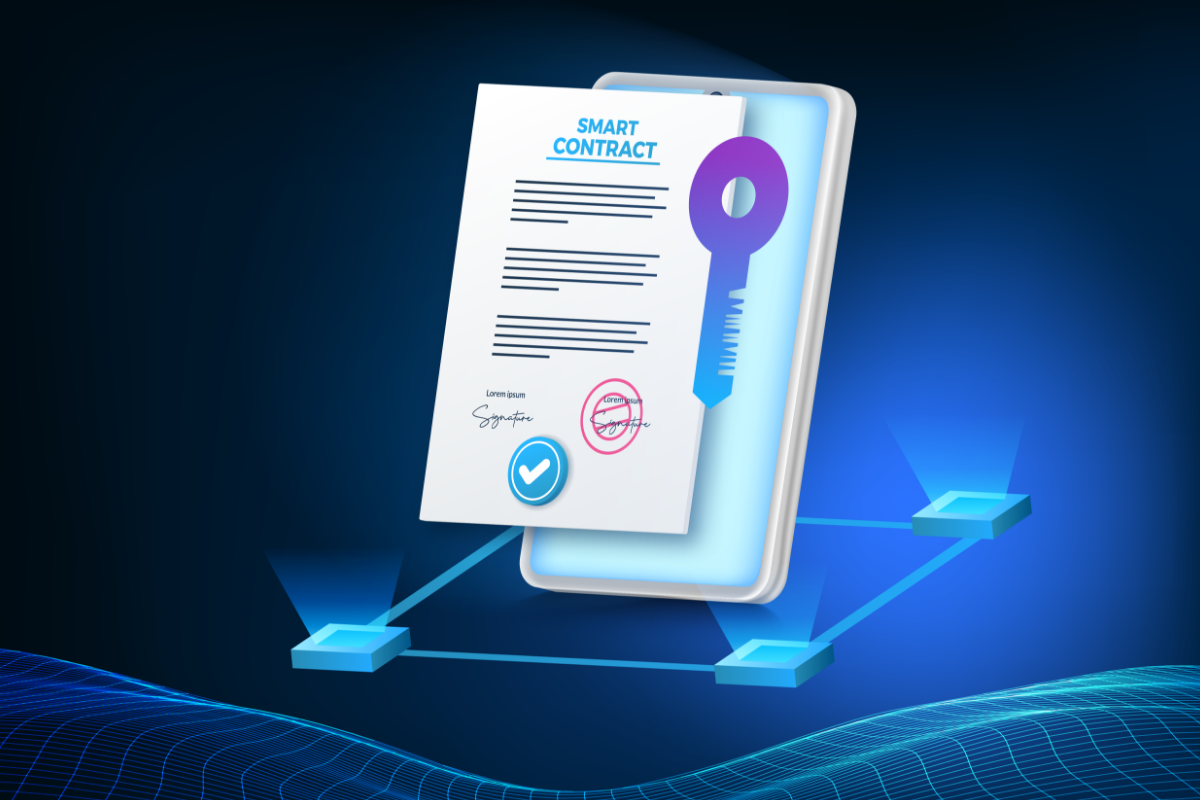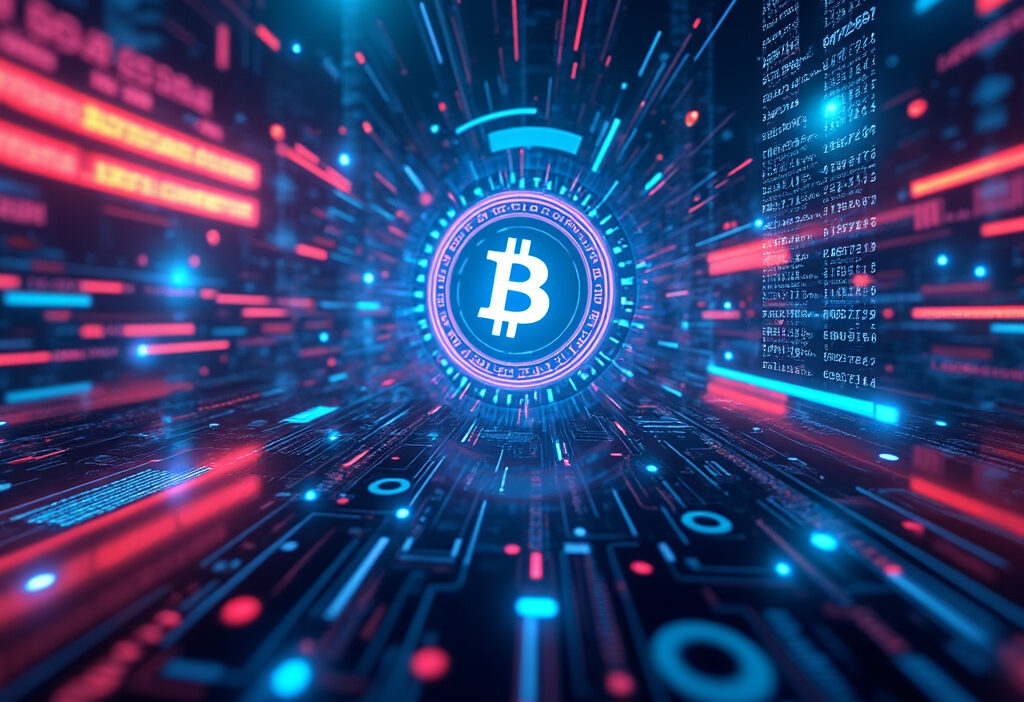Exploring Digital Assets and Smart Contracts The Future of Digital Ownership and Automation
In the digital age, digital assets and smart contracts are revolutionizing how we think about ownership, transactions, and agreements. From cryptocurrencies to non-fungible tokens (NFTs), digital assets offer new forms of value and rights. Meanwhile, smart contracts automate and secure agreements without intermediaries. This article delves into these innovations, exploring their definitions, types, benefits, challenges, and future potential.
The Essence of Digital Assets
Digital assets represent a fundamental shift in how value is stored, transferred, and authenticated in the digital economy. At their core, they are digitally native representations of ownership or rights, secured through cryptographic and blockchain technologies. Unlike traditional assets, digital assets are immutable, verifiable, and often programmable, enabling new forms of economic interaction. Their significance lies in their ability to democratize access, reduce intermediaries, and create trustless systems where transactions are executed without reliance on centralized authorities.
Cryptocurrencies, such as Bitcoin and Ethereum, are the most well-known digital assets, functioning as decentralized mediums of exchange and stores of value. They leverage blockchain technology to ensure transparency and security, challenging traditional financial systems. Beyond currencies, non-fungible tokens (NFTs) have emerged as unique digital assets representing ownership of one-of-a-kind items, from digital art to virtual real estate. Unlike cryptocurrencies, NFTs are indivisible and carry distinct metadata, making them ideal for proving authenticity and provenance in creative industries.
Digital media, including e-books, music, and videos, also qualify as digital assets when tokenized. Tokenization transforms these files into tradable units on blockchain networks, ensuring creators retain control over distribution and royalties. Additionally, utility tokens grant access to specific services or platforms, while security tokens digitize traditional financial instruments like stocks and bonds, blending regulatory compliance with blockchain efficiency.
The evolution of digital assets is reshaping industries by enabling fractional ownership, instant settlement, and automated governance through smart contracts. As these assets become more integrated into the modern economy, their potential to redefine ownership, creativity, and financial inclusion continues to expand.
Types and Examples of Digital Assets
Digital assets encompass a broad spectrum of digital content, each with distinct characteristics and applications. These assets can be broadly categorized into fungible and non-fungible types, but their utility extends far beyond mere classification. Below, we explore key types and examples of digital assets, emphasizing their unique properties and real-world use cases.
Software and Applications: These include proprietary code, open-source projects, and SaaS platforms. Unlike physical software, digital versions allow instant distribution, updates, and licensing via cryptographic keys. For instance, blockchain-based applications (dApps) leverage smart contracts to automate functions without intermediaries.
Digital Art and NFTs: Non-fungible tokens (NFTs) have revolutionized digital ownership by certifying uniqueness and provenance. From pixel art to generative AI creations, NFTs enable artists to monetize work directly, while collectors gain verifiable ownership. Platforms like OpenSea and Foundation facilitate trading, embedding metadata that ensures authenticity.
Electronic Documents: Contracts, certificates, and legal records increasingly exist as digital assets. Blockchain-based solutions, such as DocuSign with Ethereum integration, provide tamper-proof verification, reducing fraud risks. Digitally signed PDFs or tokenized deeds exemplify how traditional paperwork transitions into secure, immutable assets.
Virtual Real Estate and Gaming Assets: In metaverses like Decentraland or The Sandbox, virtual land parcels and in-game items (e.g., skins, weapons) are tradable assets. These items often appreciate in value, creating economies where players invest in and monetize digital property.
Media and Streaming Content: Music, videos, and e-books are distributed as digital assets. Platforms like Audius use blockchain to ensure fair royalties for creators, while tokenized e-books enable resale without piracy concerns.
Each type demonstrates how digital assets transcend static files, embedding programmable logic (via smart contracts) and enabling new economic models. Their evolution underscores the shift from passive ownership to dynamic, interoperable value exchange.
Digital Asset Management Systems
Digital asset management (DAM) systems are specialized platforms designed to store, organize, retrieve, and distribute digital assets efficiently. These systems act as centralized repositories, ensuring that digital assets—ranging from images and videos to documents and smart contracts—are easily accessible while maintaining security and version control. DAM systems are particularly crucial in environments where large volumes of digital content are generated, such as marketing, media, and enterprise operations.
At their core, DAM systems rely on metadata—a topic explored in the next chapter—to categorize and index assets. This metadata includes details like file type, creation date, author, and usage rights, enabling powerful search functionalities. Advanced DAM solutions incorporate AI-driven tagging, automating the classification process and reducing manual effort. For instance, a marketing team can quickly locate a high-resolution product image by searching for keywords like “2024 campaign” or “summer collection,” streamlining workflows.
The importance of DAM extends beyond mere organization. It ensures compliance with licensing agreements, prevents asset duplication, and facilitates collaboration by allowing controlled access. For example, a DAM system can restrict editing permissions to certain users while granting view-only access to others. Popular DAM solutions include Adobe Experience Manager, Bynder, and Widen Collective, each offering unique features like cloud storage integration, analytics, and API support for seamless connectivity with other tools.
As digital assets grow in complexity—especially with the rise of blockchain-based assets and smart contracts—DAM systems must evolve to handle new formats and interoperability requirements. The next chapter will delve deeper into how metadata enhances these systems, bridging the gap between asset storage and intelligent retrieval.
The Role of Metadata in Digital Assets
Metadata serves as the backbone of digital assets, providing critical context that transforms raw data into meaningful, actionable resources. Unlike the structural organization handled by Digital Asset Management (DAM) systems, metadata focuses on the descriptive, administrative, and technical attributes embedded within the asset itself. This includes details like creation date, authorship, file format, licensing terms, and even behavioral data such as usage history. By enriching digital assets with these layers of information, metadata ensures they are not just stored but also intelligently categorized, searchable, and interoperable across platforms.
One of the most powerful roles of metadata is its ability to enhance accessibility and discoverability. For instance, a photograph tagged with metadata like location, subject, and copyright status can be instantly retrieved via search algorithms, eliminating manual sorting. In blockchain-based digital assets, metadata takes on additional significance—smart contracts often rely on embedded metadata to execute terms automatically. A non-fungible token (NFT), for example, may store metadata defining provenance, rarity, or even unlockable content, directly influencing its market value.
Moreover, metadata extends the lifespan of digital assets by future-proofing them against obsolescence. As formats evolve, metadata ensures backward compatibility and aids in migration. However, this reliance on metadata also introduces challenges, particularly around standardization and trust—issues that segue into the legal complexities discussed in the next chapter. Without consistent metadata frameworks, disputes over ownership or authenticity can arise, highlighting the need for robust governance in digital asset ecosystems.
Ultimately, metadata doesn’t just describe digital assets—it activates them, turning static files into dynamic, context-aware components of the modern economy.
Challenges and Legal Considerations
The rise of digital assets and smart contracts has introduced complex legal and regulatory challenges that remain unresolved in many jurisdictions. Ownership disputes are a primary concern, as blockchain’s pseudonymous nature complicates the verification of rightful owners, especially when assets are transferred across borders. Unlike traditional property, digital assets often lack clear legal frameworks defining possession, leading to conflicts in cases of theft, fraud, or unauthorized transfers.
Inheritance presents another hurdle. Without explicit provisions in wills or estate laws, digital assets—such as NFTs or cryptocurrency holdings—may become inaccessible to heirs. Private keys, stored in wallets, can be lost if not properly documented, rendering assets permanently locked. Some jurisdictions are beginning to address this by recognizing digital assets as inheritable property, but global inconsistencies persist.
Regulatory fragmentation exacerbates these issues. Countries classify digital assets differently—some as property, others as securities or commodities—creating compliance headaches for cross-border transactions. The lack of global standards means businesses and users must navigate conflicting tax, anti-money laundering (AML), and consumer protection laws. Smart contracts, while self-executing, are not immune to legal scrutiny. Courts are still determining their enforceability, particularly when code errors or unforeseen conditions lead to disputes.
Additionally, intellectual property rights tied to digital assets, such as NFTs representing art or music, remain murky. Ownership of an NFT does not always confer copyright, leading to litigation over usage rights. As metadata (discussed earlier) enhances asset value, its legal implications—such as provenance verification—must also be clarified.
These challenges highlight the urgent need for harmonized regulations to ensure legal certainty while preserving the decentralized ethos of blockchain technology. The next chapter will explore how smart contracts aim to automate agreements, bridging some of these gaps—but not without their own complexities.
Introduction to Smart Contracts
Smart contracts represent a transformative leap in how agreements are executed, eliminating intermediaries while ensuring transparency and trust. Unlike traditional legal contracts, which rely on third-party enforcement and manual verification, smart contracts are self-executing programs stored on a blockchain. They automatically enforce terms when predefined conditions are met, reducing human error and disputes.
At their core, smart contracts operate on if-then logic. For example, a payment is released only after a delivery is confirmed, or an insurance claim is processed once verified data triggers the contract. This automation streamlines processes across industries, from finance to supply chain management, by removing bureaucratic delays.
A key distinction from traditional contracts is their immutability and decentralization. Once deployed on a blockchain, a smart contract cannot be altered, ensuring no single entity can manipulate terms. This contrasts with paper contracts, which may require amendments and are subject to interpretation. However, this rigidity also poses challenges—errors in code or ambiguous conditions can lead to irreversible outcomes, as seen in high-profile exploits like the DAO hack.
Smart contracts also differ in accessibility. While legal contracts often require lawyers and courts, smart contracts are open-source and verifiable by anyone on the blockchain. Yet, their enforceability in traditional legal systems remains ambiguous, bridging the gap between code and law.
As the previous chapter highlighted regulatory uncertainties, this chapter underscores how smart contracts attempt to bypass some legal complexities through automation. The next section will delve into their technical underpinnings, exploring how blockchain and programming languages like Solidity bring these contracts to life. Together, these chapters illustrate both the promise and the evolving challenges of decentralized agreements.
How Smart Contracts Work
Smart contracts operate as self-executing agreements with predefined rules encoded directly into blockchain networks. Unlike traditional contracts that rely on intermediaries for enforcement, smart contracts leverage decentralized blockchain technology to automate execution when specific conditions are met. At their core, smart contracts are immutable pieces of code stored on a distributed ledger, ensuring transparency and tamper-proof execution.
The foundation of smart contracts lies in blockchain architecture, where transactions are verified and recorded across multiple nodes. Ethereum, the most prominent platform for smart contracts, uses a virtual machine called the Ethereum Virtual Machine (EVM) to process and execute contract logic. Developers write smart contracts using programming languages like Solidity, a Turing-complete language designed for Ethereum. Solidity enables the creation of complex logic, including conditional statements, loops, and data storage, allowing contracts to handle intricate agreements autonomously.
Execution follows a deterministic process:
- Deployment: The contract code is compiled into bytecode and deployed to the blockchain, where it receives a unique address.
- Triggering: External transactions or other contracts invoke the smart contract’s functions, passing required inputs.
- Validation: Network nodes validate the transaction against consensus rules (e.g., Proof of Work or Proof of Stake).
- Execution: The EVM processes the contract logic, updating the blockchain state if conditions are satisfied.
Gas fees, paid in cryptocurrency, compensate miners or validators for computational resources. This mechanism prevents infinite loops and spam. Once executed, results are irreversible, ensuring trustlessness. The combination of blockchain’s decentralization, cryptographic security, and programmability makes smart contracts a transformative tool for digital ownership and automation, setting the stage for their diverse real-world applications.
Applications of Smart Contracts
Smart contracts have moved beyond theoretical potential to become transformative tools across multiple industries. In finance, they automate complex processes like loan approvals, eliminating intermediaries and reducing delays. Decentralized finance (DeFi) platforms leverage smart contracts for peer-to-peer lending, yield farming, and automated trading. For example, protocols like Aave and Compound use smart contracts to enforce loan terms, distribute interest, and liquidate collateral—all without human intervention.
The real estate sector benefits from smart contracts by streamlining property transactions. Traditional processes involve layers of paperwork, escrow services, and legal verification. Smart contracts can encode ownership transfers, automate payments upon meeting conditions (e.g., title verification), and even manage rental agreements. Platforms like Propy facilitate cross-border property sales by executing contracts on blockchain, ensuring transparency and reducing fraud risks.
In supply chain management, smart contracts enhance traceability and accountability. They can trigger payments upon delivery confirmation via IoT sensors, verify product authenticity, and enforce compliance with sustainability standards. IBM’s Food Trust network uses smart contracts to track food from farm to shelf, reducing spoilage and fraud. Similarly, Maersk’s TradeLens employs them to automate shipping documentation, cutting processing times from days to minutes.
Healthcare is another frontier, where smart contracts manage patient consent for data sharing or automate insurance claims. By integrating with electronic health records, they ensure only authorized parties access sensitive information while enforcing predefined rules.
These applications demonstrate how smart contracts shift trust from institutions to code, but their adoption also raises questions about legal enforceability—a topic explored in the next chapter. Their versatility underscores their role in reshaping industries, yet challenges remain in standardization and interoperability.
Legal Status and Challenges of Smart Contracts
The legal status of smart contracts remains a complex and evolving issue, with jurisdictions worldwide grappling with how to classify and regulate them. While some countries, like the U.S. and parts of the EU, have begun recognizing smart contracts under existing contract law frameworks, others lack clear definitions, creating uncertainty for businesses and users. The self-executing nature of smart contracts—where code enforces terms automatically—raises questions about traditional legal concepts like offer, acceptance, and intent. Courts may struggle to interpret whether a smart contract’s rigid execution aligns with the parties’ true agreement, especially in cases of coding errors or unforeseen circumstances.
Jurisdictional differences further complicate enforcement. A smart contract deployed on a blockchain operates across borders, but legal systems vary in their approach to disputes. For example, while Arizona and Tennessee explicitly recognize smart contracts as legally binding, other regions may require additional evidence to validate their enforceability. Regulatory challenges also arise in sectors like finance, where smart contracts may conflict with anti-money laundering (AML) or know-your-customer (KYC) requirements. The immutability of blockchain transactions can make compliance difficult, as modifications or reversals are often impossible once executed.
Another critical issue is liability. If a smart contract fails due to a bug or exploit, determining responsibility—whether it lies with developers, auditors, or users—remains unresolved. Standardized legal frameworks and dispute resolution mechanisms are needed to address these gaps. Some propose hybrid solutions, combining smart contracts with oracle-verified external data and arbitration clauses. As adoption grows, harmonizing these legal and technical challenges will be essential to ensure trust and scalability in smart contract applications.
The Future of Digital Assets and Smart Contracts
The rapid evolution of digital assets and smart contracts is poised to reshape industries, redefine ownership, and automate processes at an unprecedented scale. As blockchain technology matures, several key trends and innovations are emerging that could define the next decade of digital transformation.
One major development is the rise of tokenized real-world assets, where physical assets like real estate, art, and commodities are represented as digital tokens on blockchain networks. This shift could democratize access to high-value investments, enabling fractional ownership and liquidity in traditionally illiquid markets. Additionally, central bank digital currencies (CBDCs) are gaining traction, with governments exploring blockchain-based solutions to modernize monetary systems while maintaining regulatory oversight.
Smart contracts are also evolving beyond simple automation. Decentralized autonomous organizations (DAOs) leverage smart contracts to enable community-driven governance, reducing reliance on centralized institutions. Furthermore, advancements in oracle networks are improving the accuracy of off-chain data integration, making smart contracts viable for complex applications like insurance, supply chain management, and even legal agreements.
Market trends indicate growing institutional adoption, with major financial firms integrating blockchain-based solutions for settlement, custody, and compliance. However, challenges such as scalability, interoperability, and energy efficiency remain critical hurdles. Innovations like layer-2 solutions and zero-knowledge proofs aim to address these issues, paving the way for mass adoption.
Societally, the shift toward digital ownership could reduce fraud, increase transparency, and empower individuals with greater control over their assets. Yet, questions around privacy, digital identity, and equitable access must be addressed to ensure inclusive growth. As these technologies converge, their impact on the modern economy will be profound, redefining trust, efficiency, and value exchange in the digital age.

Conclusions
The exploration of digital assets and smart contracts reveals a transformative shift in digital ownership and contractual agreements. These technologies promise efficiency, security, and accessibility but also pose regulatory and ethical challenges. As they evolve, understanding their mechanisms and implications becomes crucial for navigating the future digital economy.



